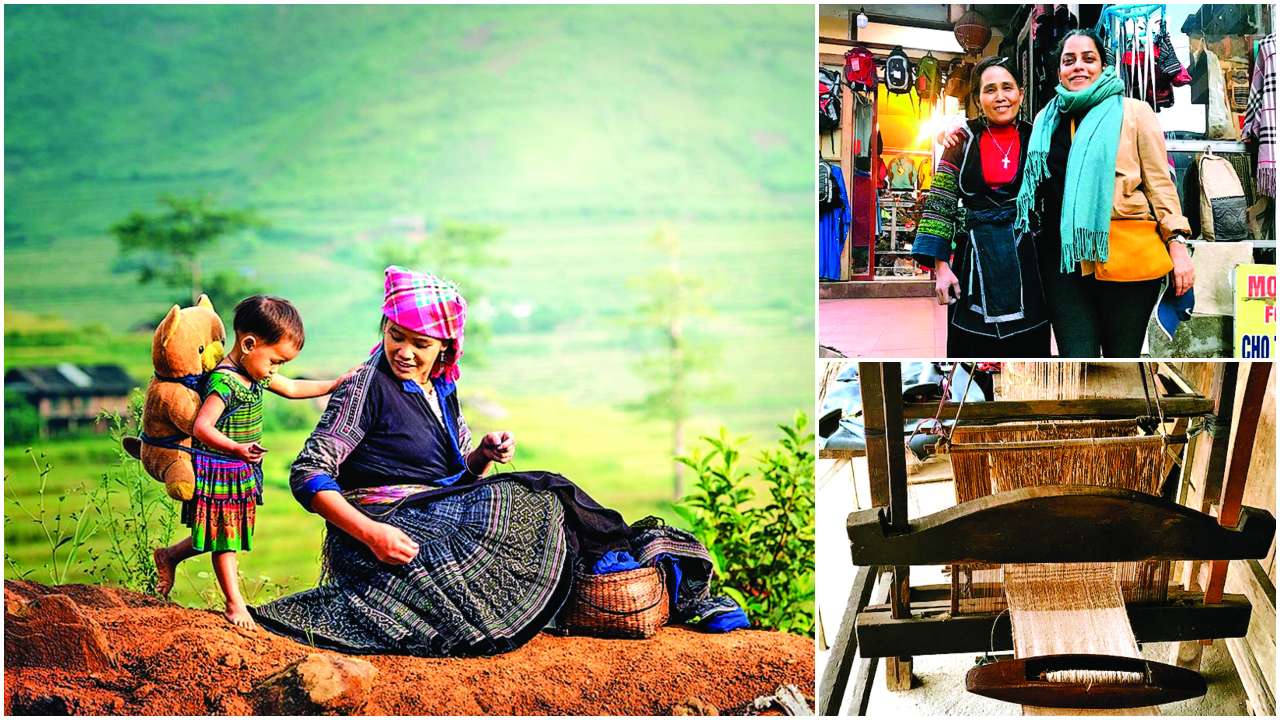
My husband began working in Vietnam in March 2015 and my family and I would visit him during holidays and started discovering the country and how beautiful it is. A friend of mine from the US had visited Sa Pa Valley and when she heard about my husband's move, she encouraged me visit despite its not being a mainstream tourist destination.
Located in Northern Vietnam, Sa Pa is difficult to reach because there are no flights. There's an overnight train journey from Hanoi to Lao Cai province and from there you have to take a bus or car for a two-and-a-half journey to Sa Pa. The valley consists of a small town and a number of villages. Life in the mountains is difficult as the area is almost always shrouded in mist. Government subsidies help the 27 ethnic minority groups who reside here and depend on agriculture.
The first time I went to Sa Pa was two and a half years ago. I stayed at the Victoria Resort. The resort has its own private train that you can board from Hanoi, and a car pick up is arranged to take you to Sa Pa. The train is not just comfortable but also beautifully decorated with indigo prints.

(Two of Anavila’s SR line that was showcased at Lakme Fashion Week, showing intricate pleat work and dieing by the people of Sa Pa)
There, I interacted with the people, and realised how it's similar to the work I'm trying to do with artisans in India. Even with the language barrier, we were able to interact with each other because there was a mutual curiosity about our craft. We went to see the local houses – mostly clay houses with wood roofs over which they spread straw, though there are a few brick houses. The first trip was about exploring. The second (taken a year ago) and third (last December) were about the work I wanted to do with the people there.
Textile crafts are a part of daily life in the valley. Most of the ethnic groups make their own textiles and clothes from cotton and hemp. Since indigo is abundant here, clothes are dyed using this natural pigment. Indeed, indigo and green are the colours of Sa Pa – the blues of the clothes and the greens of the valley. The ethnic groups decorate their clothes in different ways. Some do patchwork, some embroidery, some include patterns in the weaving itself. The head gears and ornamentation are also distinct in colour and patterns.
If you see a woman in Sa Pa in traditional clothes and a basket on her back – the silhouettes are so modern and chic, it really inspired me. I wanted to translate that in my work. I took linen and cotton and cotton-silk saris to Sa Pa on my second visit to blend their techniques of intricate pleating batik and indigo dying. We also got a number of household items for the runway show at Lakme Fashion Week Summer Resort (SR) 2019 in Mumbai (January). An example would be the straw baskets, which are central to their lives, used in kitchens and to carry grains, indigo leaves, etc. Woven by hand, they show another aspect of the craft of the people.
Despite the popular belief that Vietnamese people eat only non-vegetarian food, I found a lot of rich vegetarian food in the area. In 1922, the French turned Sa Pa into a hill station, so there is a lot of French influence to the food. You find small cafes dotting the hills, each unique in their own characteristics. A number of immigrants from other parts of the world also settled here and married local people, bringing their own influences to the food and culture.
In winters, the valley is covered in snow. Summer months are pleasant for a visit but it's best to avoid Sa Pa in the monsoons, since heavy rains inhibit mobility. It all depends how you want to experience Sa Pa.
– As told to Dyuti Basu